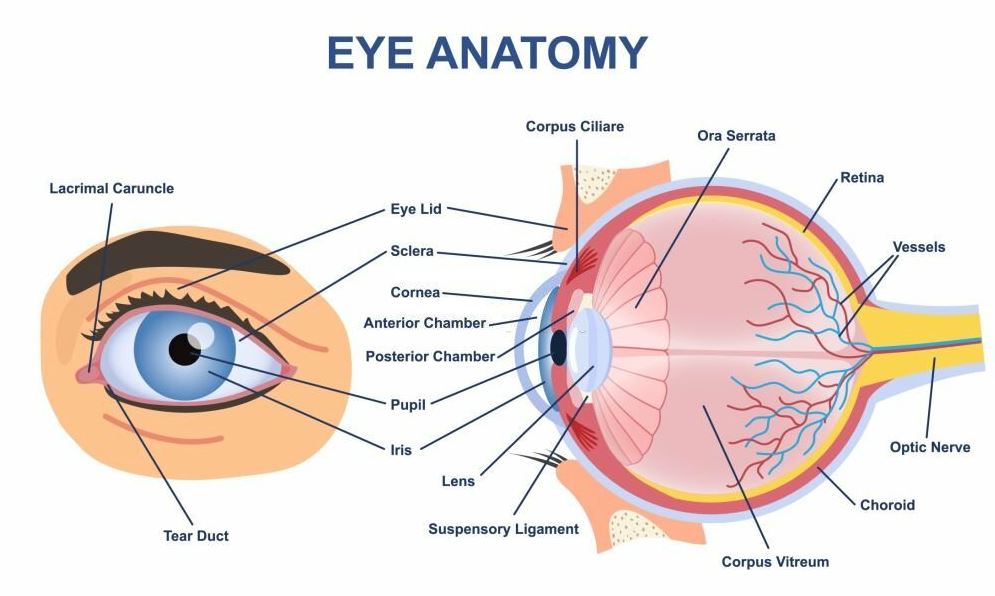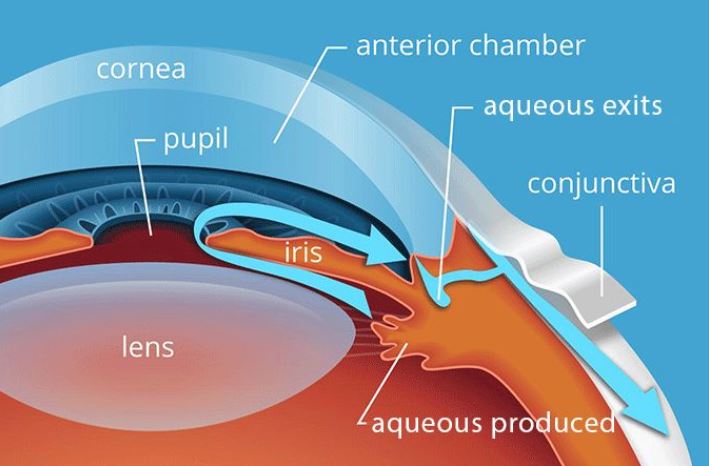The eye is a complex organ that allows us to see the world around us. It consists of various structures that work together to provide us with clear and sharp vision. One of these structures is the aqueous humor, a clear fluid that fills the anterior chamber of the eye.
Brief Anatomy of the Eye
The eye consists of various structures that work together to provide us with clear and sharp vision. The cornea is the transparent, dome-shaped structure that covers the front of the eye. The iris is the colored part of the eye that controls the amount of light that enters the eye. The lens is a clear, flexible structure that focuses light onto the retina- the layer of cells at the back of the eye that converts light into electrical signals that are sent to the brain. Aqueous humor fills the anterior segment of the eye, the space between the cornea and the lens.

Composition of Aqueous Humor
Aqueous humor is composed of various substances, including water, electrolytes, proteins, and nutrients. It is clear and colorless and has a similar composition to plasma, the liquid component of blood. It is also similar in composition to cerebrospinal fluid, which surrounds the brain and spinal cord.
Production and Drainage of Aqueous Humor
The ciliary body, a ring-shaped structure located behind the iris, produces aqueous humor. It secretes the fluid into the posterior chamber of the eye, a space behind the iris and in front of the lens. From there, it flows through the pupil into the anterior chamber of the eye, where it circulates before draining out of the eye.
The drainage of aqueous humor is crucial for maintaining intraocular pressure, which is the pressure inside the eye. If the drainage is blocked, it can cause an increase in intraocular pressure, which can lead to glaucoma, a condition that can cause irreversible damage to the optic nerve and vision loss.

Regulation of Aqueous Humor
Various factors, including the autonomic nervous system, hormones, and local factors within the eye, tightly regulate the production and drainage of aqueous humor. The autonomic nervous system, which controls involuntary functions in the body, plays a crucial role in regulating the fluid’s production and drainage. Sympathetic stimulation increases the production, while parasympathetic stimulation decreases it.
Clinical Significance of Aqueous Humor
Aqueous Humor plays a vital role in maintaining the shape of the eye and providing nutrients and oxygen to the cornea and lens. Additionally, it helps to remove waste products from the eye and regulate intraocular pressure. Nonetheless, it can also be related to various eye conditions, including glaucoma, cataracts, macular degeneration, and corneal edema.
Glaucoma
Glaucoma is a leading cause of blindness worldwide and affects millions of people. Aqueous humor builds up in the eye leading to increased pressure inside the eye. This increased pressure can damage the optic nerve which is responsible for transmitting visual signals from the eye to the brain. Over time, this damage can result in vision loss or even blindness. While the exact causes of glaucoma are not fully understood, factors such as age, genetics, and certain medical conditions can increase the risk of developing the condition.
Cataracts
Changes in the composition of aqueous humor can cause cataracts. When the fluid becomes imbalanced, it can cause a buildup of excess fluid in the lens, leading to clouding and loss of vision. Additionally, changes in the proteins in the lens caused by long-term exposure to aqueous humor can also contribute to the formation of cataracts.
Macular degeneration
Macular degeneration is a condition that affects the macula, the part of the retina responsible for central vision. It is a leading cause of vision loss in people over the age of 50. The buildup of waste products in the retina caused by changes in the composition of the aqueous humor can damage the cells of the macula, the part of the retina responsible for central vision. This damage can cause the development of AMD, which progressively deteriorates the macula, resulting in a loss of central vision.
Corneal edema
Corneal edema is another condition that can occur due to changes in the aqueous humor. When there is an imbalance between the production and drainage, it will result in increased intraocular pressure. Subsequently, as the pressure in the anterior chamber rises, it can push the fluid into the cornea and cause it to swell. This swelling can disrupt the normal arrangement of collagen fibers in the cornea, leading to vision problems. If left untreated, corneal edema can cause permanent damage to the cornea and impair vision.
Conclusion
Aqueous humor is vital for maintaining eye health, regulating pressure, and preventing conditions like glaucoma and cataracts through various functions.




